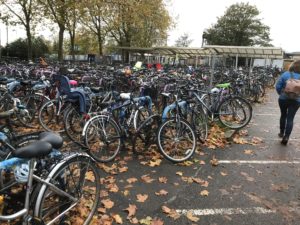
Many types of bike left by travellers at Oxford Railway Station`
As we gradually emerge from this latest lockdown, we are seeing Oxford’s roads getting much busier. But they are busy not only with motor traffic, but also with people on bikes.
Since March 2020 when the first lockdown started Oxford and Oxfordshire saw a huge increase in people riding bikes because motor traffic was greatly reduced and roads became safer for bike riders. People realised that crowded public transport was too risky and stopped travelling by bus. Indeed one of the many sadnesses of the pandemic has been to see buses almost empty of people travelling around the city and county roads.
By contrast one of the few positives of the pandemic has been that riding bikes became more and more popular, with many people riding for exercise and to get to work. Cyclox’s own Bikes for Keyworkers project, where 350 bikes were donated and refurbished and given free to keyworkers showed just how valuable cycling was perceived to be.
During the lockdowns bike shops were amongst those businesses that were classified as essential and most Oxford bike shops stayed open. Such was the demand for new bikes the shops rapidly sold out. Bike manufacturers, mostly in the Far East, were not able to increase production fast enough. There was also a demand for spare parts with many bikes being brought out of sheds and garages and give a new lease of life.
With the advent of Brexit, bikes can move tariff free between the EU and UK only if the value of components from outside the EU or UK amount to less than 45% of the total value. If the value exceeds 45%, bikes attract a 14% tariff. Most bikes would not make this cut, given that many components originate in the Far East. With the changes in trading relationships with Europe post Brexit, and with the pandemic leading to shortages in supplies because of its impact on manufacture it has looked like the “perfect storm” for the cycle industry.
The verdict from the bike industry in the short term is that there will be difficulties with cost and supply, but in the longer term there is optimism, given the ongoing demand for bikes for exercise, commuting and leisure.
Now that the vaccination scheme is in full swing we are gradually being able to be in contact with friends and family. Whether we want to get “back to normal” or whether we want to “build forward better” is a crucial question. To get more people on bikes the key issue is to make roads quieter. We hope that our new county administration will support the creation of more low traffic neighbourhoods, where through traffic is restricted, and the implementation of Connecting Oxford aimed at reducing traffic volumes across the city.
*This article was first published in the Oxford Mail under the Cyclox banner on Saturday 29th May 2021

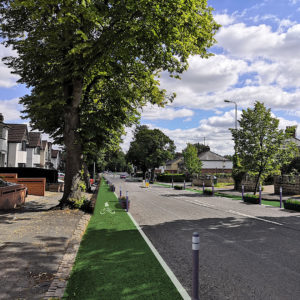 According to figures from the national road traffic accident database (reported recently in the Times), over the past 3 years the “top ten” roads in the country, outside of London, for crashes involving people riding bikes, included several in Oxford and Cambridge. Both these cities have the highest rate of cycling in the country, with 25% and 40% respectively of commuter trips by bike, so at first glance being top of the league table of crashes would seem to be contradictory.
According to figures from the national road traffic accident database (reported recently in the Times), over the past 3 years the “top ten” roads in the country, outside of London, for crashes involving people riding bikes, included several in Oxford and Cambridge. Both these cities have the highest rate of cycling in the country, with 25% and 40% respectively of commuter trips by bike, so at first glance being top of the league table of crashes would seem to be contradictory.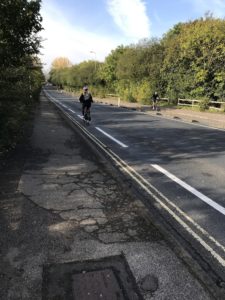
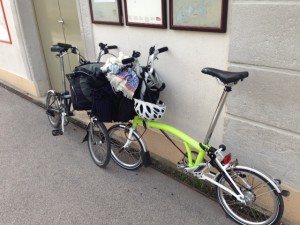

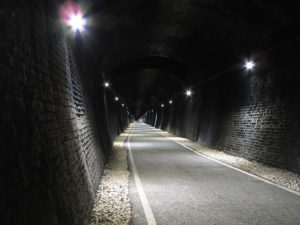
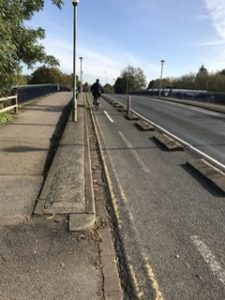
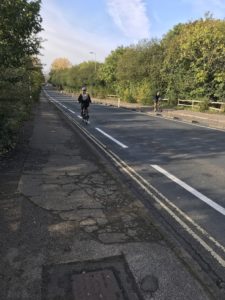

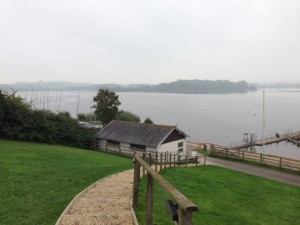
 Hello, I'm Roger Symonds and I have created this blog to highlight local and wider cycling issues. Given the incredible interest and increase in cycling we must not miss this opportunity to provide the the infrastructure that gets even more people out on bikes in a safer environment.
Hello, I'm Roger Symonds and I have created this blog to highlight local and wider cycling issues. Given the incredible interest and increase in cycling we must not miss this opportunity to provide the the infrastructure that gets even more people out on bikes in a safer environment.